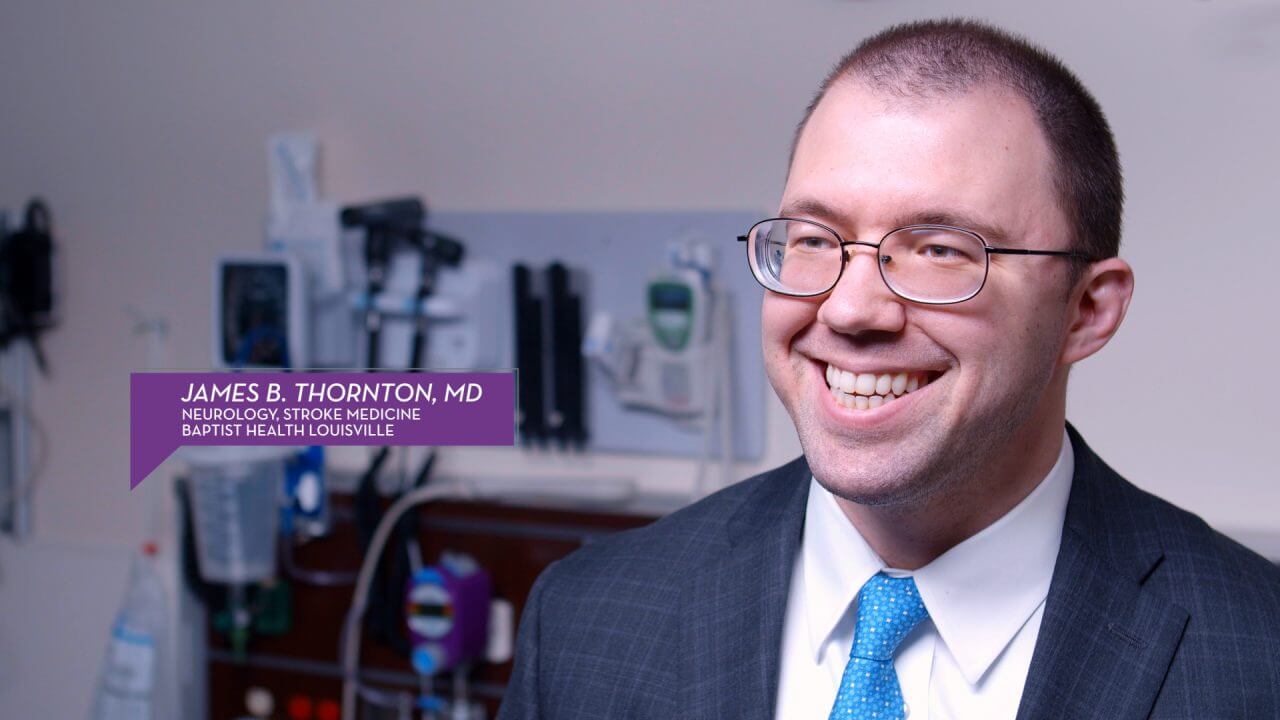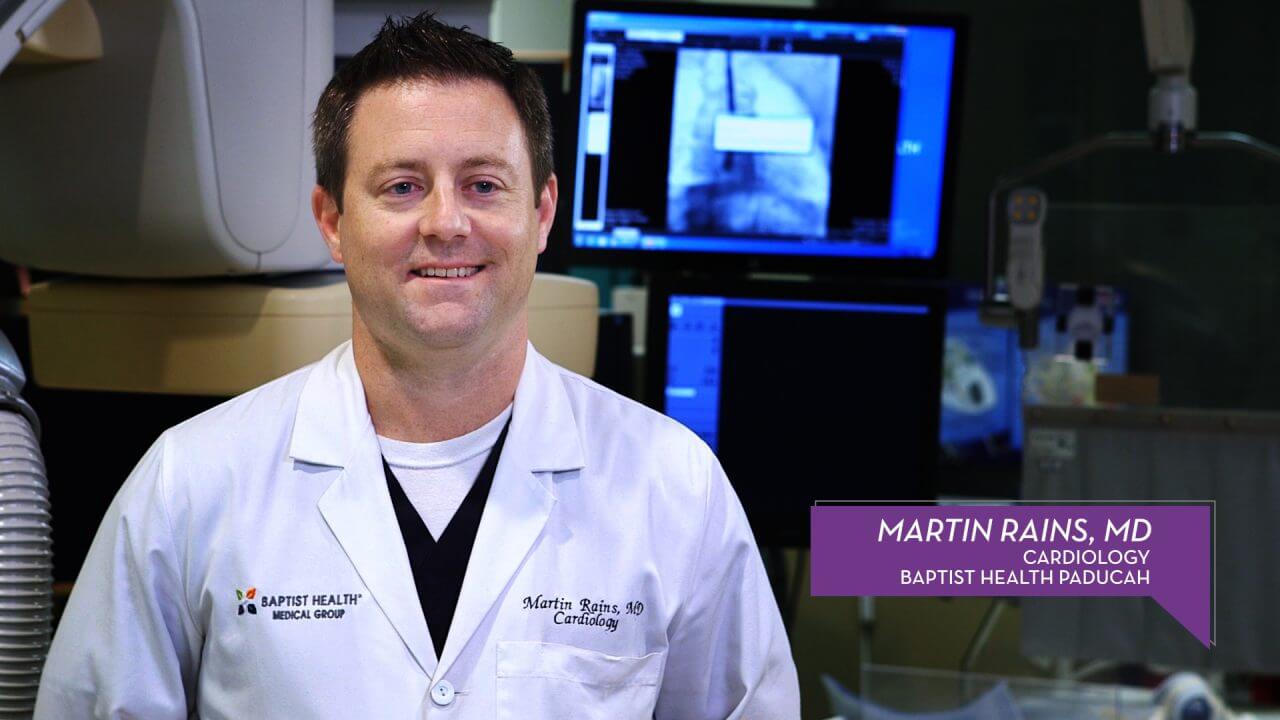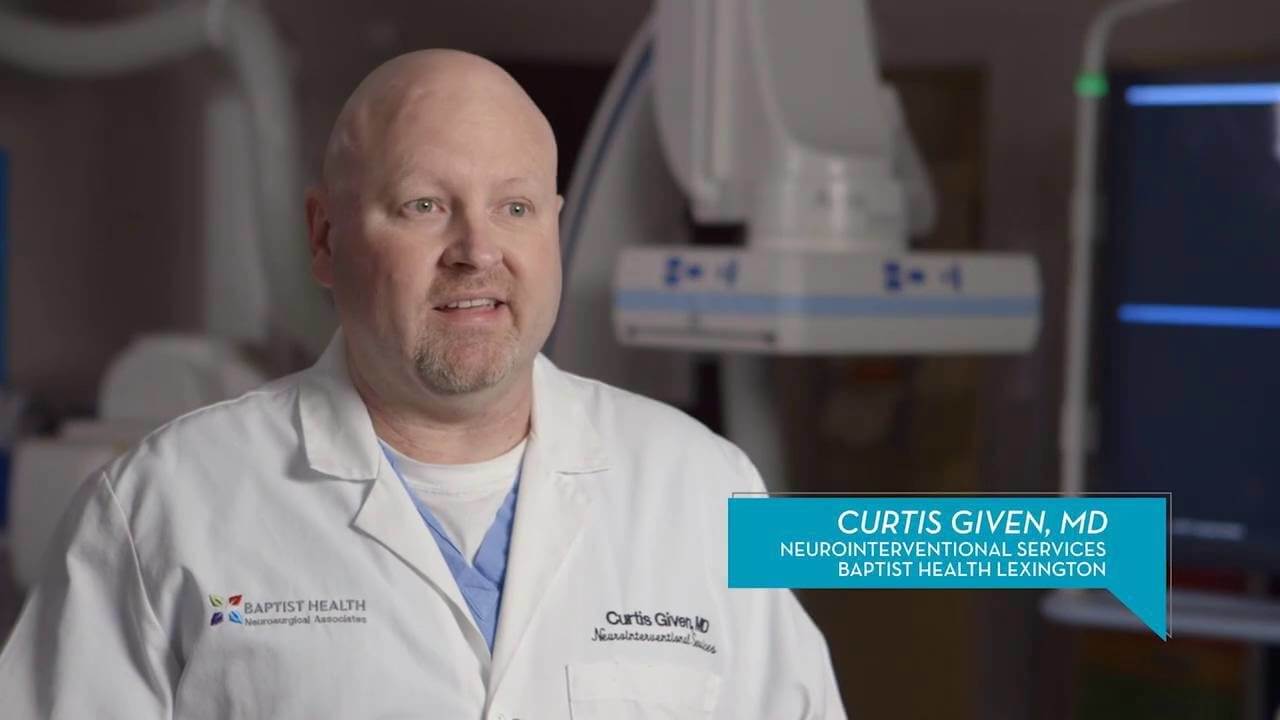Detecting and Treating Stroke
Baptist Health La Grange: Detecting and Treating Stroke
La Grange doctors JOHN MELTON, MD and RYAN SMITH, MD explain why “minutes matter” when it comes to stroke, and describe stroke symptoms, diagnosis and treatment.
Detecting and Treating Stroke Health Talks Transcript
John W. Melton, MD, Neurologist:
Stroke is the sudden onset of a focal neurologic deficit due to loss of blood flow to part of the brain. Recognizing a stroke is the most important thing. The mnemonic “FAST” stands for “face,” because a lot of people feel something abnormal in their face or someone notices they have a facial droop; “arm,” because the arm is frequently involved with either numbness or weakness; and “speech,” trouble getting the words out or just thick speech. After that, it’s all down to time – how quickly can you get to a facility that can treat acute stroke.
Ryan J. Smith, MD, Emergency Medicine:
Primarily, a stroke is diagnosed through history that we would obtain by asking questions to patients. It is also diagnosed through a physical exam done at bedside. We look for signs and symptoms of stroke. We use other tests, such as CAT scan, blood testing, including potentially an EKG. Then, we start to make decisions about how we will treat.
Dr. Melton:
One of the many options we have is to give TPA, that’s a clot-busting drug. It should be given between three to four and a half hours after the stroke symptoms first appear. We measure something called door-to-needle time, how quickly a person receives TPA, but the first measurement has to be: how long did it take you to get to our door? The key to treatment for stroke is to be seen as soon as possible. Minutes matter when it comes to stroke.



